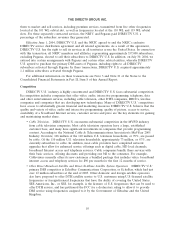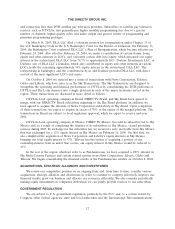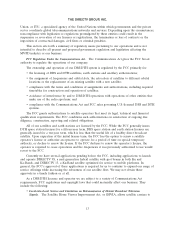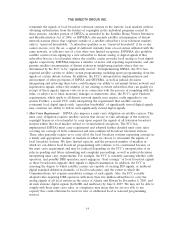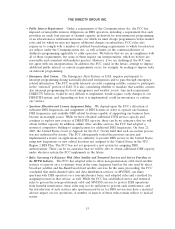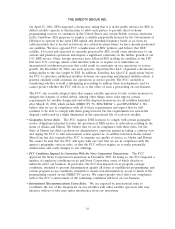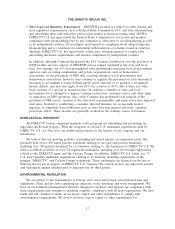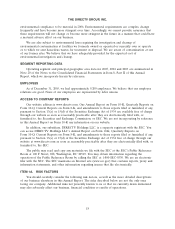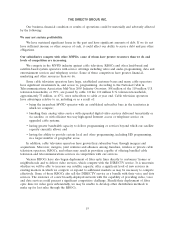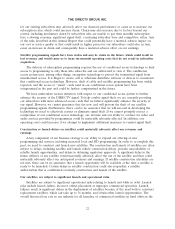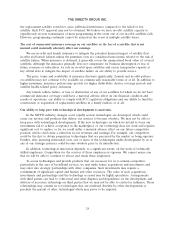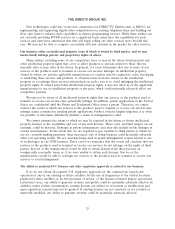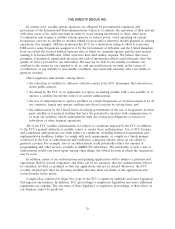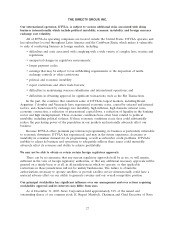DIRECTV 2005 Annual Report Download - page 32
Download and view the complete annual report
Please find page 32 of the 2005 DIRECTV annual report below. You can navigate through the pages in the report by either clicking on the pages listed below, or by using the keyword search tool below to find specific information within the annual report.THE DIRECTV GROUP, INC.
Our business, financial condition or results of operations could be materially and adversely affected
by the following:
We may not sustain profitability.
We have sustained significant losses in the past and have significant amounts of debt. If we do not
have sufficient income or other sources of cash, it could affect our ability to service debt and pay other
obligations.
Our subsidiaries compete with other MVPDs, some of whom have greater resources than we do and
levels of competition are increasing.
We compete in the MVPD industry against cable television, RBOCs and other land-based and
satellite-based system operators with service offerings including video and audio programming, data and
entertainment services and telephony service. Some of these competitors have greater financial,
marketing and other resources than we do.
Some cable television operators have large, established customer bases and many cable operators
have significant investments in, and access to, programming. According to the National Cable &
Telecommunications Association Mid-Year 2005 Industry Overview, 108 million of the 110 million U.S.
television households, or 99%, are passed by cable. Of the 110 million U.S. television households,
approximately 73 million, or 67%, were subscribers to cable at year end. Cable television operators
have advantages relative to us, including or as a result of:
• being the incumbent MVPD operator with an established subscriber base in the territories in
which we compete;
• bundling their analog video service with expanded digital video services delivered terrestrially or
via satellite, or with efficient two-way high-speed Internet access or telephone service on
upgraded cable systems;
• having greater bandwidth capacity to deliver programming or services beyond which our satellite
capacity currently allows; and
• having the ability to provide certain local and other programming, including HD programming,
in a larger number of geographic areas.
In addition, cable television operators have grown their subscriber base through mergers and
acquisitions. Moreover, mergers, joint ventures and alliances among franchise, wireless or private cable
television operators, RBOCs, and others may result in providers capable of offering bundled cable
television and telecommunications services in competition with our services.
Various RBOCs have also begun deployment of fiber optic lines directly to customers’ homes or
neighborhoods and to deliver video services, which compete with the DIRECTV service. It is uncertain
whether we will be able to increase our satellite capacity, offer a significant level of new services in
existing markets in which we compete or expand to additional markets as may be necessary to compete
effectively. Some of these RBOCs also sell the DIRECTV service as a bundle with their voice and data
services. The existence of a new broadly-deployed network with the capability of providing video, voice
and data services could present a significant competitive challenge. Should their deployment of fiber
optic lines for video grow substantially, we may be unable to develop other distribution methods to
make up for lost sales through the RBOCs.
19



